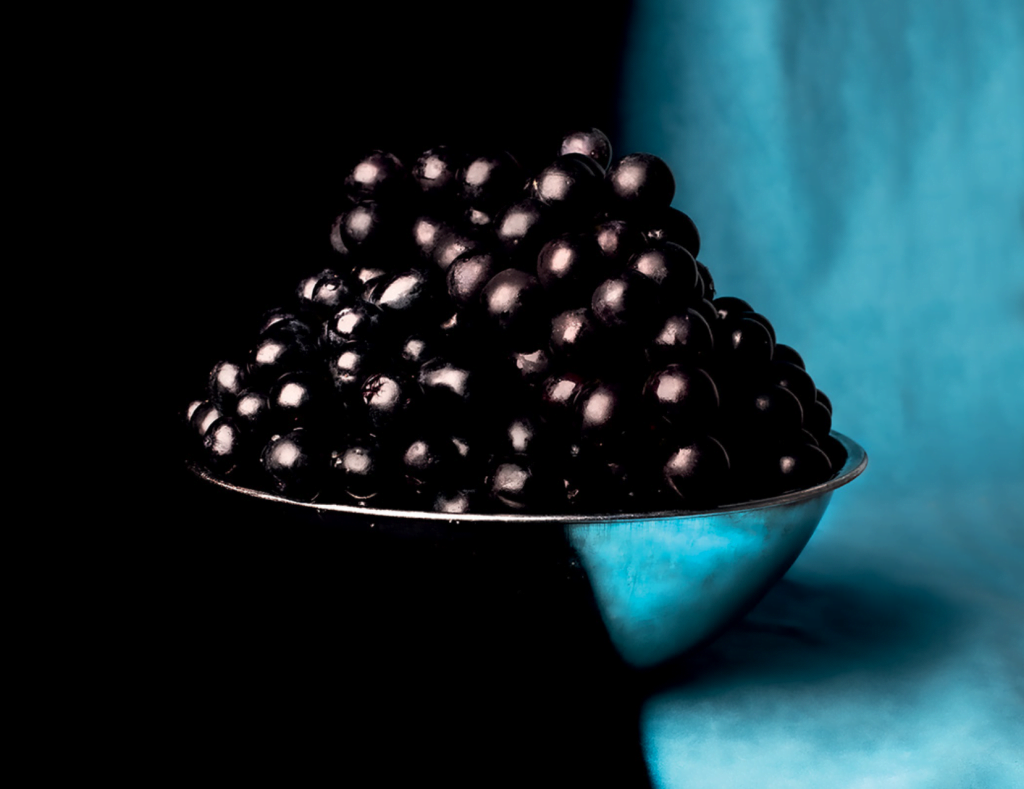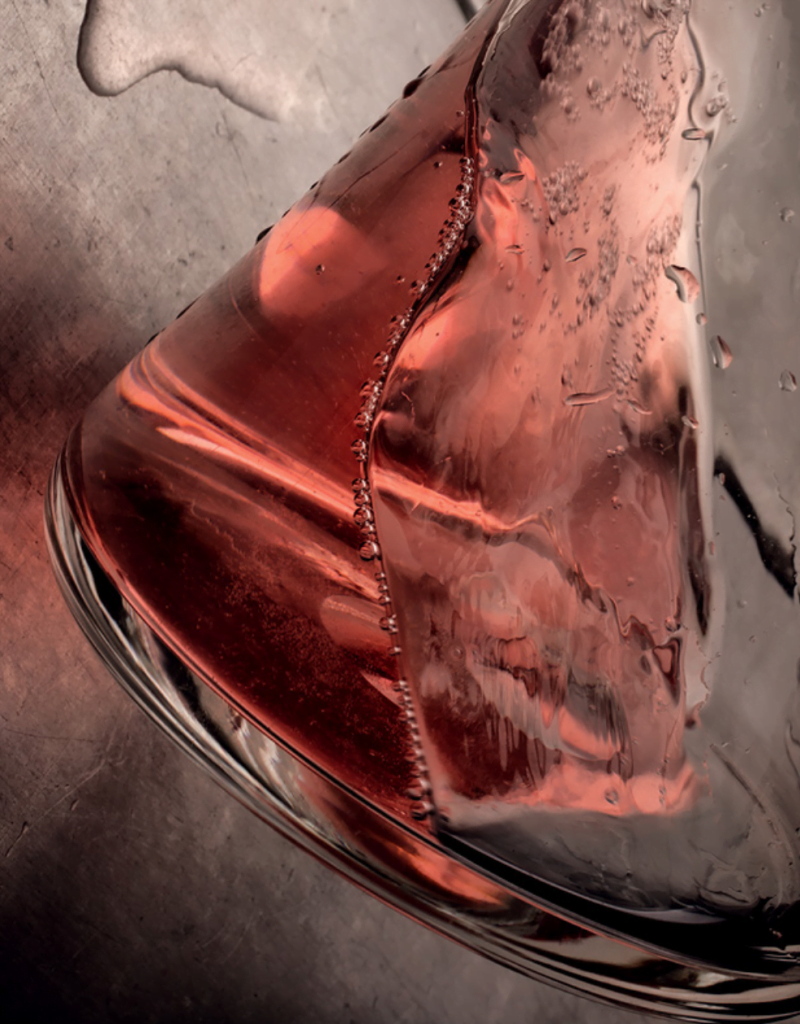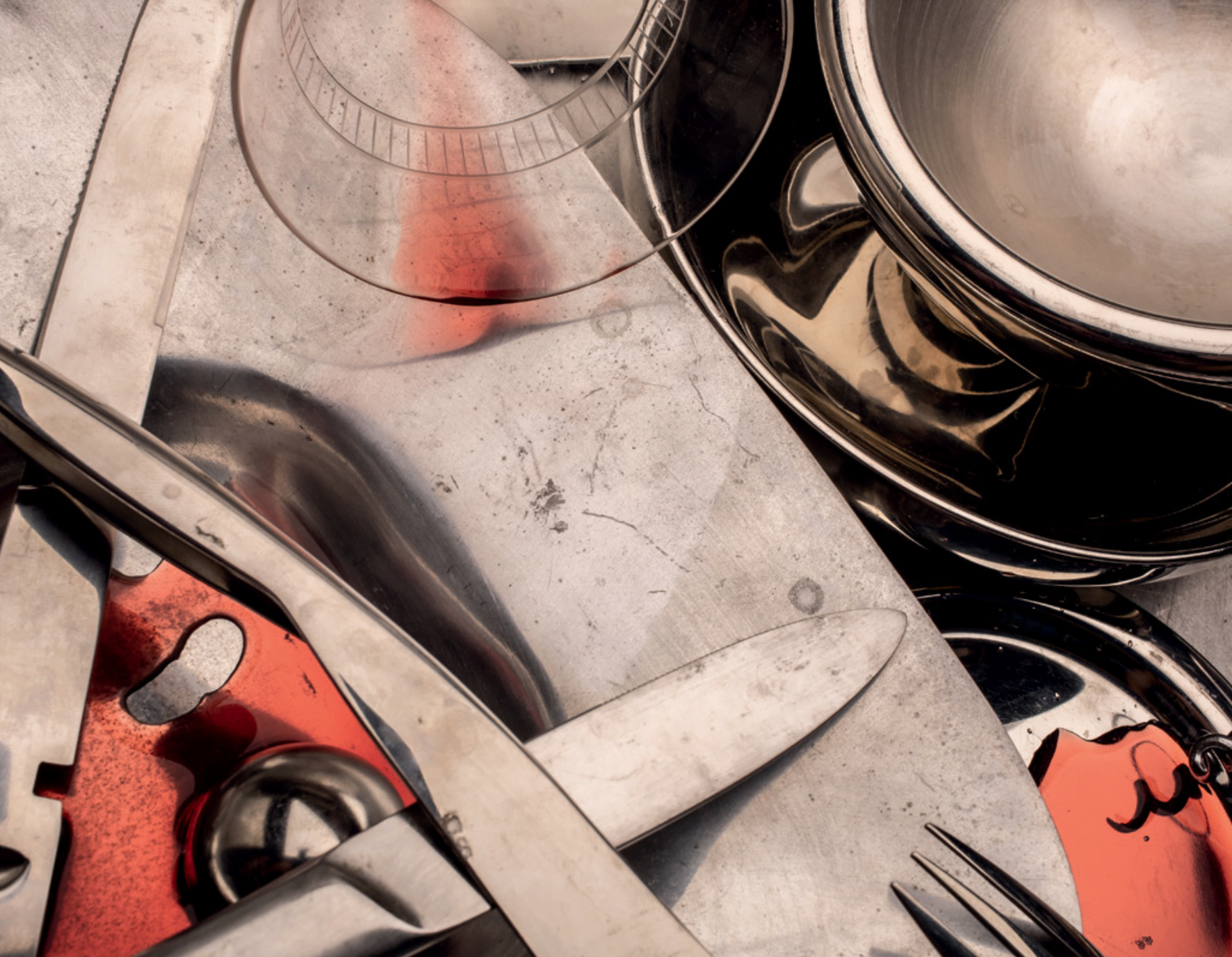A visitor coming to the famed hotel The Breakers Palm Beach in 2000 would have thoroughly enjoyed the wines at the resort’s white-tablecloth French restaurant, L’Escalier. The list, in those days, had hundreds of selections, an impressive roster that was enough to earn the coveted Grand Award from Wine Spectator, establishing it among the country’s best.
Certainly, that experience was augmented by the other charms of the family-owned, now 538-room resort. Built in 1896 by Palm Beach’s founding father, Henry M. Flagler, The Breakers remains a bastion of old-world elegance, with a palatial Italianate main building that stands out even among its upscale neighbors.
But at that moment 23 years ago, The Breakers’ wine program was still just a shadow of what it would become, at the dawn of an era when wine appreciation and collecting would explode, and people would demand more from their high-end dining experiences.
That was the year Virginia Philip arrived, at age 33, to work as a sommelier at L’Escalier; three years later she was running the entire wine program. It was a surprising hire, given her youth and gender—Master Sommeliers are overwhelmingly male, though the numbers are starting to change. She had arrived after a career in wine retailing and working at other resorts, including Aspen’s beloved The Little Nell. Only a year before, in 1999, a man named Juan Gomez had started working at L’Escalier as a server, pouring coffee and orange juice to guests at breakfast. Soon, their fates would intertwine.
Fast-forward to 2023, at the height of the Palm Beach season: The Breakers now boasts a mind-boggling program of 2,200 different selections, backed up by a cellar of 55,000 bottles spread over its 10 restaurants. L’Escalier is gone, replaced by the much hipper and more casual HMF, now boasting its own Grand Award.
And The Breakers’ wine team is pivoting again, as people have returned to pre-pandemic dining enthusiasm. The world has changed, and a good wine list has to reflect that. In particular, the recent migration of newcomers to Florida from New York changed the demand at The Breakers, noticeably shifting partialities to certain regions. “There were a lot of real estate transactions, and people were coming to escape Covid restrictions elsewhere,” Philip says. “That coincided with consumers drinking more Italian wine. Normally people are more focused on Bordeaux and Burgundy.”
For reasons unknown, the top producers represented on The Breakers’ list have noticed the same change globally. “We could see an increase in Italian fine wine consumption during Covid, and demand increased when restaurants finally reopened,” says Giovanni Gaja, who helps run the family winery, Gaja—among Piedmont’s finest producers of sought-after Barolos and Barbarescos, and a cult winery for collectors of Italian bottlings.
Just as wine itself changes in the bottle, maturing over time, preferences among diners evolve, too. The hippest trends elsewhere—orange wines and natural wines—have not yet made it to the more conservative Palm Beach, but other new horizons have opened. Gomez, who rose from server to become Philip’s deputy and a Master Sommelier himself, says that “people are changing; they’re so well-traveled now,” meaning that they are open to new things. “Chile is getting a great reputation, and so is Argentina.”

Today, the HMF at The Breakers is the only establishment in Palm Beach to have earned the coveted Grand Award. How it got there is a study in persistence and vision, from the hotel’s staff to its owners. Soon after Philip came on board, she became only the 11th woman in the world to earn the title of Master Sommelier, an international accreditation that carries huge weight on the restaurant scene. (She was also named “Best Sommelier in America” in 2002 by the American Sommelier Association.)
Philip had taken to offering wine courses to interested staff members, with the goal of promoting talent from within. The 16-week course culminated in a test, and Gomez placed among the top scorers. Philip encouraged him to pursue a Master Sommelier accreditation. Earning the title involves not only written exams, but famously an in-person blind-tasting test that would likely stump most wine snobs. It would take him six years.
Having two Master Sommeliers on hand is highly unusual. There’s a certain married couple energy to the way the two get along. Philip, a Connecticut native, seems like a reserved New Englander at first. But her flair is demonstrated by the fact that she drives a Porsche 911 4 Targa stick shift; Gomez has a buoyant, up-front enthusiasm. “We’ll sometimes answer the same email the same way independently,” he says. “We have great communication. If she’s not here, I jump in, and if I’m not here, she does.” And they have five additional sommeliers working under them.
Not only does Philip preside over one of the country’s best wine lineups—she also travels to France every year to blend custom wines for The Breakers, so that the hotel can serve its guests something actually made by the staff under the hotel’s label.
That level of staff resources shows that, at a resort that could have coasted pretty much forever on a reputation from a century ago, the owners have decided to up the ante again, with implications not only for hotel guests and local Palm Beach diners, but also for wine appreciation on a national scope.
“Most people are shocked at the amount of wine we have,” says Philip over dinner at Flagler Steakhouse, sipping and considering a Château Cos d’Estournel Goulée Medoc 2016 from Bordeaux (verdict: good, but could age). “We’re not a thump-our-chest property. We know what we have. We pride ourselves in really ‘curating’ the list—I know some people hate that word, but it’s true.”
The Breakers could reasonably be accused of underselling their wine program, on their website at least. It’s that good, given the breadth, variety, and thoughtfulness of its selections.
For his part, Gaja calls it “one of the most prestigious wine lists in the U.S.” Gaja, the fifth generation of the family business, adds, “A consumer can purchase a bottle knowing the service and food will match the moment worthy of a great wine.” And when he returns to The Breakers, he knows what he will pick to drink. “I will order the Gaja Dagromis Barolo 2018,” he says. “That vintage made a very easy, drinkable, perfumed Barolo.”
Barbara Banke, the chair and proprietor of Jackson Family Wines, one of the largest wine companies in the world, concurs: “The lists are just so great. It’s a wonderful place to showcase wine.”
Banke, who has dined at The Breakers many times, knows whereof she speaks, since her company’s portfolio includes labels like La Jota Vineyard Co., Freemark Abbey, Vérité, Stonestreet, and Arrowood from California—not to mention Kendall-Jackson, the powerhouse brand that built the business—as well as Bordeaux’s Château Lassègue. Many of those labels are on the lists at The Breakers. When she’s not drinking her own wines, Banke enjoys delving into the Champagne and Burgundy selections at the resort.
Almost any part of the list can serve as an example of the depth at The Breakers, but perhaps the Burgundy roster is the most impressive of all, especially the representation of the producer Domaine de la Romanée-Conti. Known as DRC to insiders, the family-owned domaine is probably the world’s most sought-after single winery; a normal high-end wine list might have a few of their bottlings if it’s lucky.
The list at HMF, which is by far the biggest one at The Breakers, has more than 100 DRC options, many of them stacked in the Wine Wall, a glass-and-steel, temperature-controlled case right in the restaurant itself. The DRC wines listed include the resort’s most expensive offerings: the 2005 and 2010 vintages of the flagship Romanée-Conti wine, both running $23,000 for a single, regular-sized bottle.
There are older wines for serious connoisseurs (Château Lafite Rothschild 1928, anyone?); a very serious wine-by-the-glass program, where each selection is described in conversational detail; and a massive trove of half-bottles—an oft-overlooked category—which Philip notes are getting harder to acquire. As Banke puts it, “Virginia and her team strike a real balance between interesting things no one has heard of and wine every- one has heard of and wants to order.” And you can get a wine for $50, too (like the Grans-Fassian Riesling 2009).

The original story of how exactly the wine program became such a stunner dates back to the 1970s, when a man named Henry Warren started to build the first serious list at The Breakers. That effort was rewarded in 1981, the very first year of Wine Spectator’s Grand Awards. The hotel was only one of 13 restaurants to merit the recognition.
Twenty years later, it needed a boost. “When I started at the end of 2000, there were 710 selections,” says Philip, which sounds like a lot, but in fact put the resort in danger of falling behind. “I had a lot of work to do to get the list back up to par.” A visit from the then–Executive Editor of Wine Spectator, Thomas Matthews, gave her a sense of what was required. “He sat me down and said we were at risk of losing our Grand Award,” recalls Philip. “We had to add 200 selections per year at a minimum.”
As Matthews, who has retired but still advises the magazine, says now, “The Grand Award is a high bar. We’ve dropped a number of restaurants who failed to hang in there.” Though Bordeaux, Burgundy, and California may have the most depth and get the most attention from guests, Matthews advises diners not to skip over the Spanish selections. “Solid selections from all major regions, with depth and stylistic variation from Rioja and Ribera del Duero,” he says. “More than half the reds [are] less than $100.”
Upon starting her position, Philip got to work right away. The process of creating a huge wine cellar is a complex undertaking, and one that requires an outlay of capital that most hotel owners, particularly large corporate chains, are loath to make: You’re spending money on something that may not generate revenue for years. “We have financial support to buy things we’re not putting on the list next week, or next year, but in six years,” Gomez says. “They need time to mature.”
That is brought into stark relief with the practice of buying what are known as Bordeaux “futures”—wines from the great region of France that are still maturing in barrels and haven’t even been bottled yet. “We’re family-owned, and sometimes the decision does go to the top if we’re spending $100,000 or $150,000 on futures,” Philip says of seeking approval from the Kenan family, the direct descendants of Henry Flager who own the hotel.
Resources are also being deployed to totally new parts of the world, not just the French classics. Gomez was born and raised in Mexico—he’s the only native Mexican to be a Master Sommelier—and at the end of 2022 he put on the list the first Mexican wine in the history of The Breakers (the country’s wine scene has been growing exponentially in terms of quality). “I’m excited,” he says. “People ask me, ‘What’s new on the list’? And that’s an opportunity to talk about something like this.”
Sancerre, the Sauvignon Blanc–based wine from France, has become so popular that the selections routinely sell out, making it difficult to keep the list updated. “People are really appreciating Sauvignon Blanc instead of Chardonnay,” says Philip, noting another change in what guests are now drinking.
The HMF list also boasts wines from Slovenia, Lebanon, and Israel. That kind of breadth is part of what makes a truly large, serious wine list a boon to spreading knowledge about wine itself as well as the larger world. If it were just about giving affluent diners something to drink at dinner, the team could have stopped cellaring new selections a few hundred bottles ago.
Andy Chabot, the sommelier for the acclaimed Blackberry Farm resort in Walland, Tennessee—another of the country’s best places to get happily lost in a wine list, also a Grand Award winner—admires The Breakers’ wine program for its eclecticism and its seriousness. Diners, says Chabot, “get to experience or taste a wider array of classic wines than would otherwise be experienced in more tightly defined programs, or in programs focused on a particular ethos that leaves certain wines off the list.”
Wine programs are ultimately about the taste and ability of the people who run them, and Philip has focused on growing talent on her team, especially in-house, with Gomez as a particular success story.
He says that her nurturing of him also reflects how Philip nurtures guests. “She wanted to create a wine program with no intimidation. Wine is still an intimidating topic for a lot of people.” Especially, he adds, “in this beautiful building, which looks like a palace.”
Philip has also made an effort to pay it forward in making sure women are represented at the highest levels of her profession, not just at The Breakers. “It was sink or swim, there wasn’t a lot of mentorship,” she says of getting her Master Sommelier. “So I’ve made a commitment to mentor as many people as I can, especially women.”
Despite new attitudes and new wines, the heart of The Breakers’ wine list lies in France, harkening back to the old-school days at L’Escalier. And that is why for their custom wines, Philip goes to France’s Languedoc region, bringing two or three of her staffers each trip, to make 36,000 bottles a year under The Breakers label. The source for the program is the grapes grown at the well regarded Mas La Chevalière estate, owned by the Burgundy producer Domaine Laroche. Available all over the resort are the specially blended Chardonnay, Sauvignon Blanc, Pinot Noir, and Cabernet Sauvignon.
Other restaurants attempt house blends, but most do not succeed, given the complexity, expense, and time required, and most don’t have a hands-on creation. “Many are wretched,” Philip says. “When people hear that we blend our own, they get the idea that it will be a better experience.” Blending wine is incredibly difficult, as it involves tasting small amounts of wine made from many different plots of land, and often different grapes, and then attempting to put them together in a coherent whole—a jigsaw puzzle for the senses. But Philip enjoys the challenge. “Our goal is to make a house blend that is conducive to our clientele base—European, with an American flair,” she says.
Despite her many duties at The Breakers, Philip has personally branched out, establishing her own boutique shop and cellar management advisory, Virginia Philip Wine Spirits & Academy, nearby in Palm Beach (and unaffiliated with The Breakers). It has a classroom built-in, offering classes that are part of her continuing commitment to wine education.
But it is hard to imagine either Philip or Gomez departing to work at any other restaurant group anytime soon. And the reason is clear, says Gomez: “The standards here are just so high.”
This story and more appears in PALMER Volume 3, available now.



